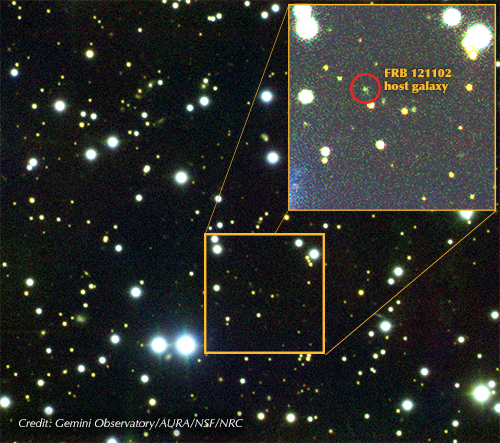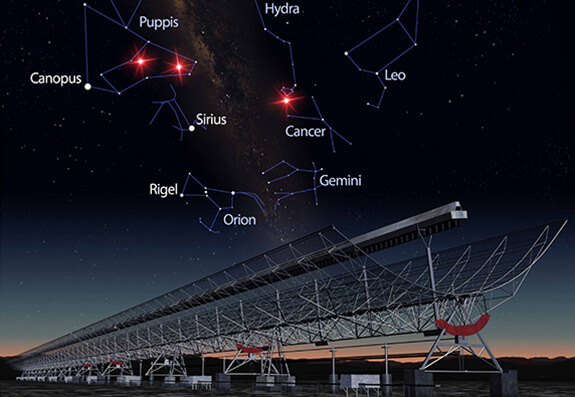Fast Radio Bursts (FRBs) have puzzled astronomers since they were first detected in 2007. These mysterious milliseconds-long blasts of radio waves appear to be coming from long distances, and have been attributed to various things such as alien signals or extraterrestrial propulsion systems, and more ‘mundane’ objects such as extragalactic neutron stars. Some scientists even suggested they were some type of ‘local’ source, such as atmospheric phenomena on Earth, tricking astronomers about their possible distant origins.
So far, less than two dozen FRBs have been detected in a decade. But now researchers from the Australian National University and Swinburne University of Technology have detected three of these mystery bursts in just six months using the interferometry capabilities of the Molonglo Observatory Synthesis Telescope (MOST) in Canberra, Australia. In doing so, they were able to confirm that these FRBs really do come from outer space.
“Figuring out where the bursts come from is the key to understanding what makes them,” said Manisha Caleb, a PhD candidate at ANU, and lead author of a new paper. “While only one burst has been linked to a specific galaxy we expect Molonglo will do this for many more bursts.”
The unique long and narrow configuration of MOST provides a huge collecting area of about 18,000 square meters for a very large field of view, about 8 square degrees of the sky. In an effort to boost the capabilities of this telescope for hunting for the elusive FRBs, MOST has been upgraded and reconfigured, with the ultimate goal of localizing the bursts down to an individual galaxy.
Caleb produced software to sift through the 1,000 terabytes of data produced by MOST each day, and that allowed her and her team to make the three new FRB discoveries.
They determined the three new FRBs really were from space because the events were well beyond the 10,000 km near-field limit of the telescope, which ruled out local (terrestrial) sources of interference as a possible origin.
Caleb and her team wrote in their paper that they also demonstrated with pulsars that a repeating FRB seen with MOST has the potential to be localized quite precisely, which is “an exciting prospect for identifying the host,” they wrote.

So far, however, just one FRB has repeated, and although Caleb and her team were able to observe the area of each of the new FRBs for several hours, (105 hours following FRB 160317, 43 hours on FRB 160410 and 35 hours on FRB 160608) they found that “no repeat pulses were found from any of the FRB positions.”
But with the nature and source of these FRBs still being highly debated, the capabilities of MOST and an Australian collaboration called BURST provides the most promising hope for determining what FRBs truly are. The BURST project will perform deep FRB searches with MOSTS’s wide field-of-view and nearly constant single pulse searches of the radio sky. You can read more about the project here.
Read the team’s paper: The first interferometric detections of Fast Radio Bursts
Press release from Swinburne

